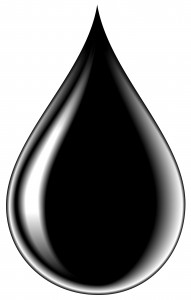
What’s going on with oil and energy these days?
Last week, SNL Financial noted that,
“Canada’s crude oil producers are looking to markets other than the U.S. to sell increased output amid delays in pipeline expansions, according to the president of the Canadian Association of Petroleum Producers.
“In terms of growth potential, Keystone is obviously bogged down and everything behind Keystone in the queue is bogged down because the regulatory process won’t engage on those other projects until Keystone clears its hurdles one way or another,” Collyer said. “The primary focus for Canadian producers, Canadian governments and Canadian pipeline companies is to look east and to look west.”
Canada is tired of waiting. What else?
Besides the current frustration with our Canadian friends, there is another overlooked consequence stemming from the delays with the Keystone XL Pipeline project: high gas prices.
Although the pipeline (and ANWR, and other major oil projects) have multi-year lead times, when a project of this magnitude has the green light to move ahead, it has an immediate effect on the markets by changing the traders’ expectations of future supply. Having more oil available in the marketplace contributes to lower prices for consumers. So when Keystone was delayed — multiple times — the markets have reacted accordingly.
In fact, it was noted last week that July 4th marked a record 1290 days of gas prices above $3.00/gallon. Gas prices climbed above $3.00/gallon on Dec. 23, 2010, and that streak has continued since then.
Of course, don’t forget what Secretary Chu said back in 2012 about the price of gas: Chu “admitted to a House committee that the administration is not interested in lowering gas prices.
Chu, along with the Obama administration, regards the spike in gas prices as a feature rather than a bug. High gas prices provide an incentive for alternate energy technology, a priority for the White House, and a decrease in reliance on oil for energy”.
This helped to explain why Keystone was delayed. While the White House continues to “figure out” how to balance two of his major constituencies (labor is pro-pipeline and environmental is anti-pipeline), Americans are feeling the price at the pump. But it doesn’t have to be this way.
According to Gordon Ritchie, vice chairman of RBC Capital Markets, Ritchie noted,
“I’m at a loss to understand why the Americans wouldn’t approve the pipeline going down south because of the difference between the Brent price of oil — world price — and the North American combined price of WTI (West Texas Intermediate). “That $5 a barrel is really a subsidy by Canada to American consumers of gasoline and it works out to about $20 billion a year.”
To add insult to injury, a new report is out that shows the highway trust fund is losing money due to to more fuel efficient cars, which Obama had repeatedly championed. Additionally, the high prices have kept Americans from traveling as much. The highway trust fund will go from a budgeted $50 billion to around $34 billion. The Highway Trust Fund receives roughly 18 cents on every gallon of gasoline sold in this country.
Meanwhile, Canada gets antsy, gas prices are high, the Highway Trust fund is being depleted. Will the Obama Administration finally move forward with Keystone?